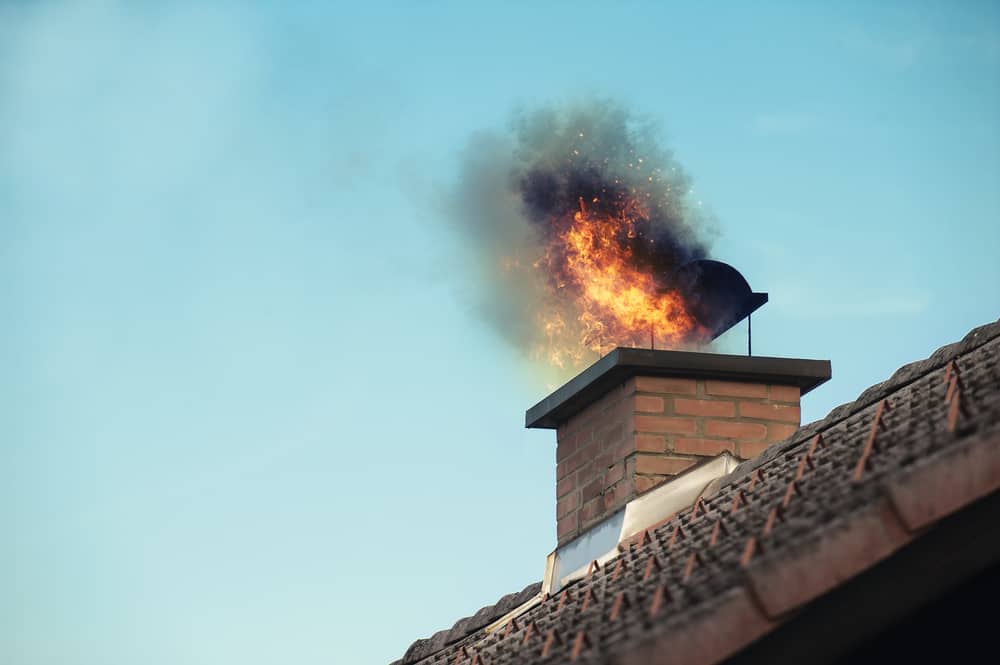If you own a chimney, you probably want to at least have a basic understanding of what creosote is. It’s a substance no one wants in their chimney, but will inevitably make its way in. While there are many reasons having your chimney cleaned out at least once a year is important, creosote buildup is number one on the list. It’s one of the most common, yet most dangerous, substances to have in your chimney.
What is Creosote?
 Creosote is a residue left behind on your chimney from the unburned particles of fuel from your fireplace or appliance. It builds in three stages, with each stage more difficult to remove and dangerous than the last. It begins as a loose flaky substance that is easy brush off of your chimney.
Creosote is a residue left behind on your chimney from the unburned particles of fuel from your fireplace or appliance. It builds in three stages, with each stage more difficult to remove and dangerous than the last. It begins as a loose flaky substance that is easy brush off of your chimney.
At the second stage, it builds into harder shiny flakes that contain tar, which can require special tools to remove. At the third stage, it becomes even more hardened and resembles tar running down your chimney. As the third stage creosote hardens, more can build on top of it, so it can form a very thick layer.
How it Puts Your Home in Danger
Creosote is dangerous to have in your chimney. Like all substances that buildup in your chimney system, it restricts the chimney’s airflow. Since one of a chimney’s main functions is to work as a vent for the smoke and gases produced from your appliance or fire, this is harmful because it stops your chimney from being able to do its job.
When the airflow is clogged, gas and smoke are not able to fully leave your home through the chimney and can stick around and harm your home and put you in danger. The challenge with creosote is also that a clogged airflow causes tougher creosote, to accumulate.
Creosote is highly flammable and is the leading cause of chimney fires. Chimney fires always damage the structure of your chimney and can spread to your home. They are not always loud or explosive, so many chimney fires go undetected. Using your chimney after a fire is extremely dangerous and can lead to a worse chimney fire later, so it’s important to prevent them from occurring at all.
Why it Requires a Professional Chimney Clean Out
Unless you only have first stage creosote, it can be next to impossible to get rid of it with a DIY chimney cleanout. Furthermore, it is not always easy to detect creosote in your chimney, and when you do your own cleanout you may use your chimney all winter thinking it’s safe and creosote-free when in reality you missed some.
Creosote is not something to take likely, and the only way to ensure your chimney is safe from it is to have a professional clean out your fireplace for you. Looking to schedule an appointment with a chimney sweep to rid your chimney of these harmful substances? Fill out our online form here.
